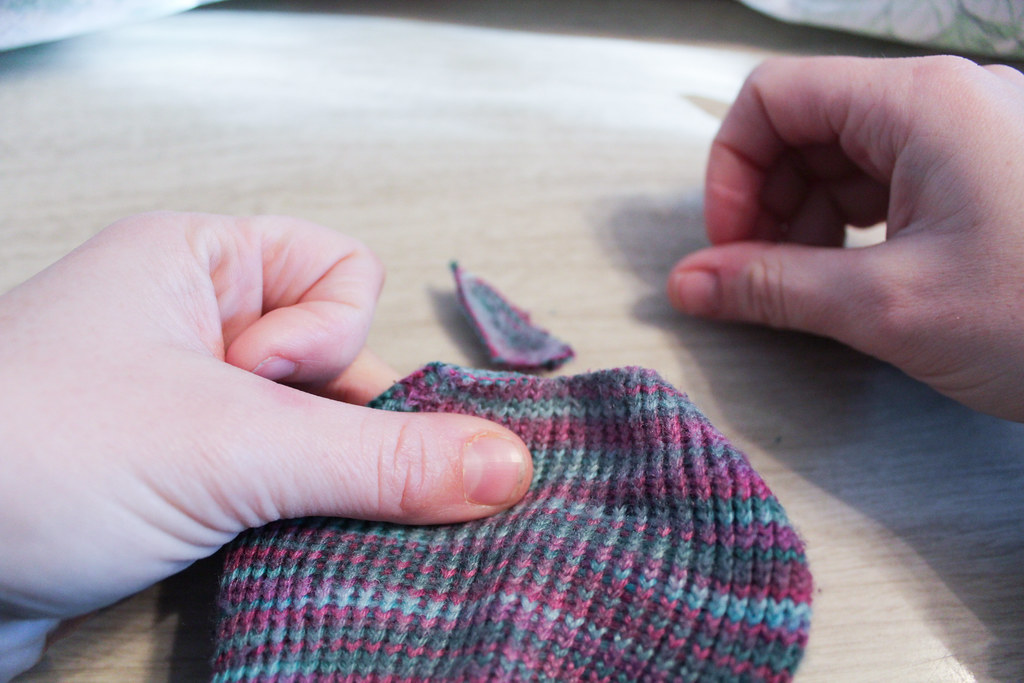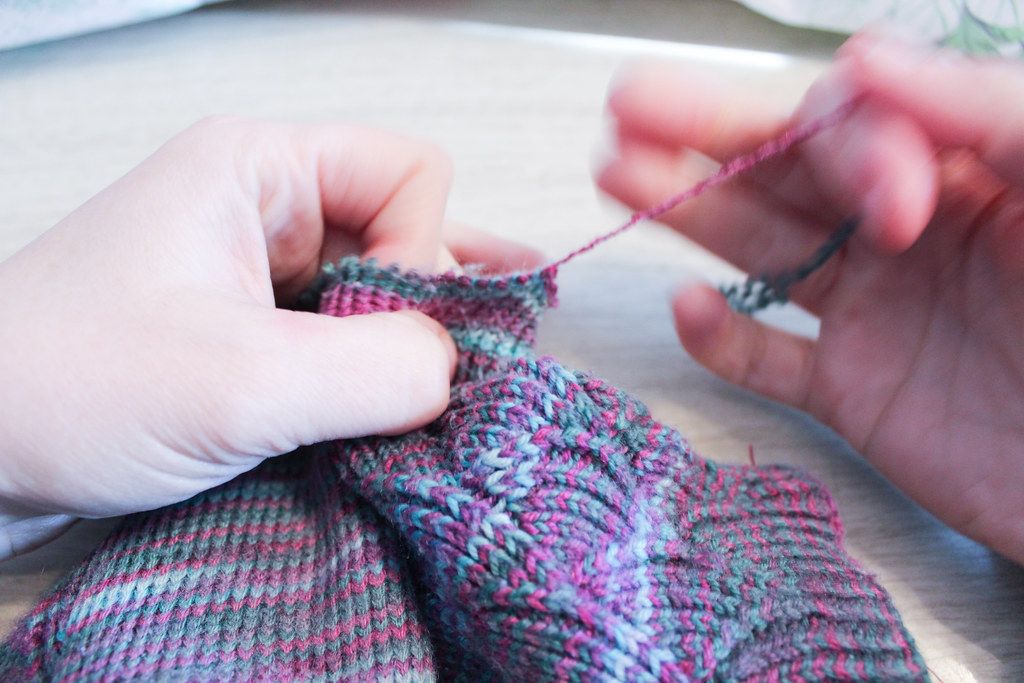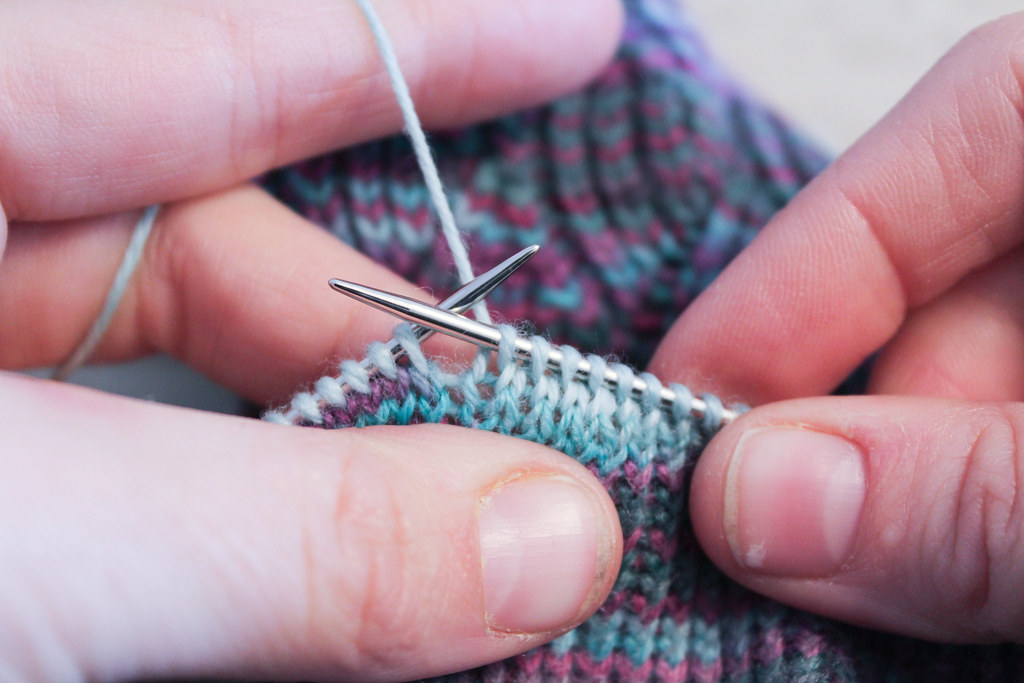Nearly everyone I’ve met has, at one point or another, expressed a desire to speed up their knitting. Here’s a few tricks (some fast, some not) to speed up your knitting.
- Knit off the Tips: that is, move your stitches to the tips of your needles. When we first learned to write when we were children, I know many of us held our pencils in the middle of the pencil, only to have our teachers slide our fingers closer to the point of the pencil. The closer your fingers are to the action, the less movement you have to do, and the less time each stitch takes. Beginners often hold their stitches far away from the tips of the needles, afraid the stitches will fall off. It can quickly become a habit. Move your stitches and fingers closer to the tips of the needle, and things will gradually speed up.
- Watch for unnecessary movements. Sometimes when we first learn to knit we acquire extra movements that aren’t necessary for knitting. Watch your hands while knitting (and especially purling) to make sure everything you do is necessary to creating a stitch.
- Stay relaxed. The more your muscles tense up, the more you are fighting against yourself. When you are practicing speeding up your knitting, try to keep your wrists, shoulders and arms relaxed.
- Keep a finger on the next and following stitches. You can see here how the pointer fingers of both hands are holding the stitches on the needles.
- Learn a different method of knitting. While most people knit English Style, it is far from the fastest way of knitting. Try learning continental, Portuguese style, or something similar to the Yarn Harlot’s Cottage Knitting style.
- Watch your posture. The more you hunch over your knitting, the slower you’re going to get. Practice good posture and keeping your hands low in your lap instead of holding them midair.



































